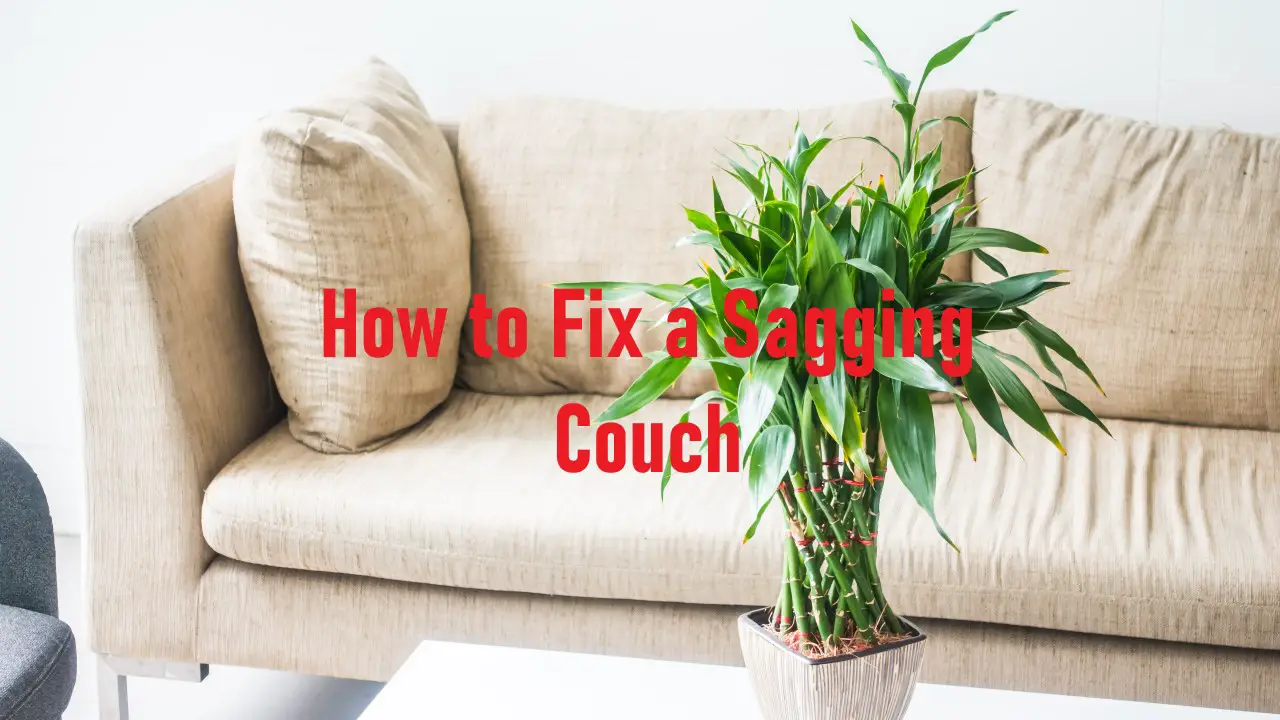A sagging couch can be an annoying and uncomfortable problem that can make your living room look unkempt. There are several reasons why a couch might sag, including worn-out cushions, old springs, or a bad frame. Fortunately, there are several ways to fix a sagging couch without having to buy a new one.
One of the easiest ways to fix a sagging couch is to start with the cushions. Check the foam padding on the sofa cushions to see if it is still firm and strong. If it’s not, you can remove the cover from the zipper and replace the filling and batting. Alternatively, you can add some extra soft stuffing to the cushions or beat them to loosen compacted fillings. If the cushions are still in good condition, the sagging could be traced to the serpentine springs within the couch frame.
Page Contents
Understanding the Problem

A sagging couch is a common problem that many people face. It can be caused by a variety of factors, including worn-out cushions, old springs, or a bad frame. When a couch starts to sag, it becomes uncomfortable to sit on and can even cause back pain.
The most obvious sign of a sagging couch is when you sink in too far when you sit down. This can make it difficult to get up and can be very uncomfortable. It can also cause the cushions to lose their shape and support, making them less comfortable to sit on.
If you notice that your couch is sagging, the first step is to determine the cause of the problem. If the cushions are worn out, then you may need to replace them. If the springs are old or damaged, then you may need to replace them as well. If the frame is the problem, then you may need to have it repaired or replaced.
It’s important to address a sagging couch as soon as possible, as it will only get worse over time. A sagging couch can also be a safety hazard, as it can cause someone to fall or lose their balance when sitting down or getting up.
In summary, a sagging couch is an uncomfortable and potentially dangerous problem that can be caused by a variety of factors. It’s important to address the problem as soon as possible to prevent further damage and discomfort.
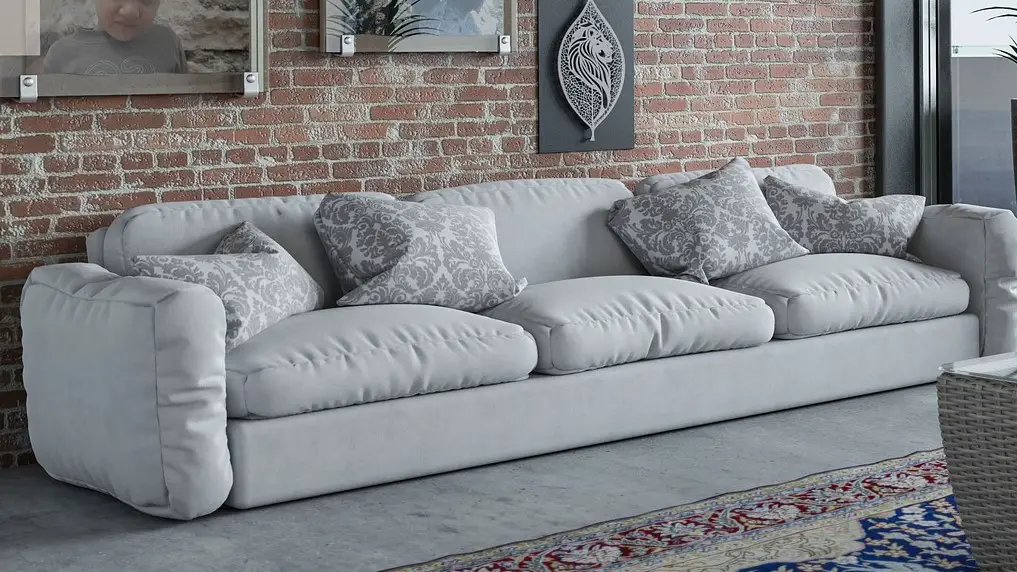
Identifying the Cause
When it comes to fixing a sagging couch, it’s important to identify the root cause of the problem. In most cases, a sagging couch is caused by issues with the cushions, frame, or springs. By identifying the cause, you can determine the best course of action to fix the problem.
Cushion Issues
If the cushions on your couch are sagging, this is likely due to wear and tear over time. Couch cushions can become compressed and lose their shape, which can lead to sagging. In some cases, the filling inside the cushions may need to be replaced.
To determine if the cushions are the cause of the problem, remove them from the couch and inspect them for signs of wear and tear. If they appear to be in good condition, the problem may lie elsewhere.
Frame Issues
A sagging couch may also be caused by issues with the frame. Wooden frames can become warped or damaged over time, which can lead to sagging. Metal frames may also become bent or damaged, which can affect the overall structure of the couch.
To determine if the frame is the cause of the problem, inspect it for any signs of damage or wear and tear. Pay particular attention to any joints or areas where the frame connects to the couch. If the frame appears to be in good condition, the problem may lie elsewhere.
Spring Issues
Finally, a sagging couch may be caused by issues with the springs. Couches typically use zig-zag springs to provide support, and these springs can become worn or damaged over time. If the springs are loose or have broken off, this can cause the couch to sag.
To determine if the springs are the cause of the problem, inspect them for any signs of wear and tear. Pay attention to any areas where the springs connect to the frame or the couch. If the springs appear to be in good condition, the problem may lie elsewhere.
Overall, identifying the cause of a sagging couch is the first step in fixing the problem. By inspecting the cushions, frame, and springs, you can determine where the issue lies and take the appropriate steps to fix it.
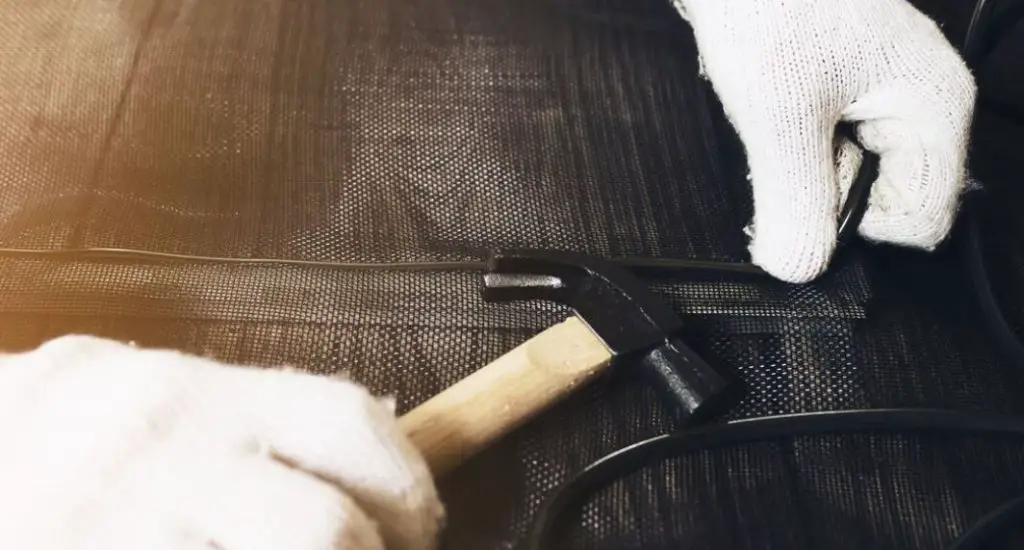
Gathering Necessary Tools
Before attempting to fix a sagging couch, it is important to gather the necessary tools. The following tools may be needed for the job:
- Screwdriver: A screwdriver may be needed to remove or tighten screws on the couch frame or legs.
- Pliers: Pliers may be needed to remove staples or nails from the couch.
- Utility Knife: A utility knife may be needed to cut away fabric or foam from the couch.
- Scissors: Scissors may be needed to cut new foam or fabric to size.
- Staple Gun: A staple gun may be needed to attach new fabric to the couch.
- Drill: A drill may be needed to attach new legs or frame supports to the couch.
It is important to make sure that all tools are in good working condition before starting the job. If any tools are damaged or broken, they should be replaced before starting the job.
Additionally, it may be helpful to have some extra materials on hand, such as:
- Foam: If the couch cushions are sagging, new foam may be needed to replace the old foam.
- Fabric: If the couch cover is damaged or worn, new fabric may be needed to replace the old fabric.
- Frame Supports: If the couch frame is damaged or weak, new frame supports may be needed to reinforce the frame.
By gathering all necessary tools and materials before starting the job, the process of fixing a sagging couch can be made much easier and more efficient.
Fixing Sagging Cushions
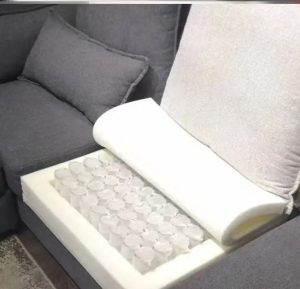
Sagging couch cushions can be a major eyesore and make your couch uncomfortable to sit on. Fortunately, there are a few things you can do to fix the issue. This section will discuss two methods for fixing sagging cushions: replacing cushion foam and washing and drying cushion covers.
Replacing Cushion Foam
If your couch cushions are sagging, it may be time to replace the foam. Over time, foam can break down and lose its shape, causing your cushions to sag. To replace the foam, you will need to remove the old foam from the cushion cover and replace it with new foam.
To replace the foam, follow these steps:
- Measure the cushion cover to determine the size of the new foam you will need.
- Remove the old foam from the cushion cover.
- Cut the new foam to the correct size.
- Insert the new foam into the cushion cover.
- Zip up the cushion cover.
When selecting new foam, consider the density and firmness of the foam. A denser foam will last longer and provide more support, while a softer foam will be more comfortable. You can also consider adding a layer of batting or polyester fiberfill around the foam for added comfort.
Washing and Drying Cushion Covers
If your couch cushions have removable covers, washing and drying them can help restore their shape and firmness. Before washing, check the care label on the cushion cover to ensure it can be washed in a washing machine.
To wash and dry cushion covers, follow these steps:
- Remove the cushion covers from the cushions.
- Check the care label for washing instructions.
- Wash the cushion covers in a washing machine on a gentle cycle using cold water and a mild detergent.
- Dry the cushion covers on a low heat setting in a dryer or air dry them.
Be sure to check the care label for any special instructions, such as not using bleach or not drying in a dryer. Additionally, if your cushion covers are made of delicate upholstery fabric, you may want to consider having them professionally cleaned instead.
By replacing cushion foam or washing and drying cushion covers, you can fix sagging couch cushions and make your couch more comfortable to sit on.
Addressing Spring Issues
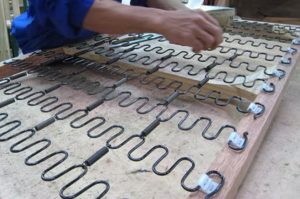
If your couch is sagging, it could be due to issues with the springs. In this section, we will discuss how to address spring issues in your couch.
Replacing Couch Springs
If your couch springs are broken or worn out, you may need to replace them. This can be a bit of a challenge, so it’s best to take your couch to a professional if you’re not comfortable doing it yourself.
However, if you’re feeling up to the task, here are the steps to replace your couch springs:
- Remove the old springs: Use pliers to remove the old springs from your couch. Be careful not to damage the frame or any other parts of the couch.
- Measure the new springs: Measure the length and width of the old springs to ensure that you get the right size replacements.
- Install the new springs: Use pliers to install the new springs in the same location as the old ones. Make sure they are securely attached to the frame.
Installing Zig-Zag Springs
Another option for fixing spring issues in your couch is to install zig-zag springs. These are often easier to install than traditional springs and can provide better support.
Here are the steps to install zig-zag springs in your couch:
- Remove the old springs: Use pliers to remove the old springs from your couch.
- Measure and cut the new springs: Measure the length and width of the area where you will be installing the zig-zag springs. Cut the new springs to the appropriate size.
- Install the new springs: Use a staple gun to attach the new springs to the frame. Make sure they are evenly spaced and securely attached.
By following these steps, you can address spring issues in your couch and restore its support and comfort.
Additional Solutions
If the previous solutions didn’t work, there are still other ways to fix a sagging couch. Here are some additional solutions that you can try:

Using a Couch Saver
A couch saver is a product specifically designed to fix a sagging couch. It is a support panel that goes under the cushions to provide extra support for the springs and frame. Couch savers come in different sizes and shapes to fit different types of couches. To use a couch saver, simply place it under the cushions and adjust it until it provides the necessary support.
Adding a Slipcover
Adding a slipcover to a sagging couch can be a quick and easy solution. Slipcovers come in different styles and colors, and they can give your old couch a new look. They can also cover up any imperfections or sagging areas. However, slipcovers do not provide extra support for the couch, so they are not a long-term solution.
Considering a New Sofa
If the couch is beyond repair, it may be time to consider a new sofa. When looking for a new sofa, consider the size, style, and material. Look for a sofa that provides good support for the back and cushions. Consider the durability of the material, especially if you have pets or children. Some of the best couches on the market include the Joybird Eliot Sofa, the Burrow Nomad Sofa, and the Article Sven Sofa.
Remember, fixing a sagging couch requires patience and effort. Don’t give up on your old couch just yet. Try these solutions before considering a new sofa.
Frequently Asked Questions
How do you fix a sinking couch?
To fix a sinking couch, you need to determine the root cause of the problem. If the cushions are worn out, you can replace them with new foam inserts or add more filling to the existing ones. If the springs are damaged or broken, you can replace them with new ones. If the frame is the issue, you may need to replace it entirely or reinforce it with additional support.
Why is my couch sinking in the middle?
A couch may sink in the middle due to several reasons. The most common cause is worn-out cushions or a damaged frame. Other reasons include broken or damaged springs, improper weight distribution, or poor quality materials. To prevent your couch from sinking in the middle, it is essential to invest in high-quality materials and ensure proper maintenance.
How can I make my couch tighter?
To make your couch tighter, you can use several methods. One way is to add more filling to the cushions or replace them with new foam inserts. Another way is to reinforce the frame with additional support or replace it entirely. You can also tighten loose screws or bolts and adjust the legs to ensure proper weight distribution. Regular maintenance and cleaning can also help keep your couch tighter and prevent it from sagging.
